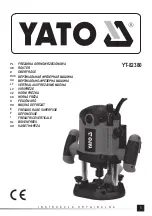
OSPF Configuration Commands
581
In some cases, it may be required that only the routing information meeting some
conditions can be advertised. Then, the filter-policy command can be used to
configure the filtering conditions for the routing information to be advertised.
Only the routing information passing the filtration can be advertised.
For the related commands, see acl and ip ip-prefix
Example
Configure OSPF that only advertises the routing information permitted by acl 1.
[3Com] acl number 1
[3Com-acl-basic-1] rule permit source 11.0.0.0 0.255.255.255
[3Com-acl-basic-1] rule deny source any
[3Com-ospf] filter-policy 1 export
filter-policy import
Syntax
filter-policy {
acl-number
| ip-prefix
ip-prefix-name
| gateway
prefix-list-name
}
import
undo filter-policy {
acl-number
| ip-prefix
ip-prefix-name
| gateway
ip-prefix-name
}
import
View
OSPF view
Parameter
■
acl-number: Access control list number used for filtering the destination
addresses of the routing information.
■
ip-prefix-name: Name of address prefix list used for filtering the destination
addresses of the routing information.
■
gateway ip-prefix-name: Name of address prefix list used for filtering the
addresses of the neighboring routers advertising the routing information.
Description
Using the filter-policy import command, you can configure the OSPF rules of
filtering the routing information received. Using the undo filter-policy import
command, you can cancel the filtering of the routing information received.
By default, no filtering of the received routing information is performed.
In some cases, it may be required that only the routing information meeting some
conditions can be received. Then, the filter-policy command can be used to set the
filtering conditions for the routing information to be advertised. Only the routing
information passed the filtration can be received.
Using the filter-policy import command, you can filter the routes calculated by
OSPF. Only the filtered routes can be added to the routing table. The filtering can
be performed according to the next hop and destination of the route.
Since OSPF is a dynamic routing protocol based on link state, its routing
information hides in the link state, this command cannot filter the
advertised/received routing information in link state. There is more limitation when
using this command in OSPF than using it in distance vector routing protocol.
This command is valid for this process only if multiple OSPF processes are enabled.
Summary of Contents for Router 3031
Page 6: ......
Page 686: ...686 CHAPTER 6 ROUTING PROTOCOL...
Page 758: ...758 CHAPTER 7 MULTICAST COMMON CONFIGURATION COMMANDS...
















































